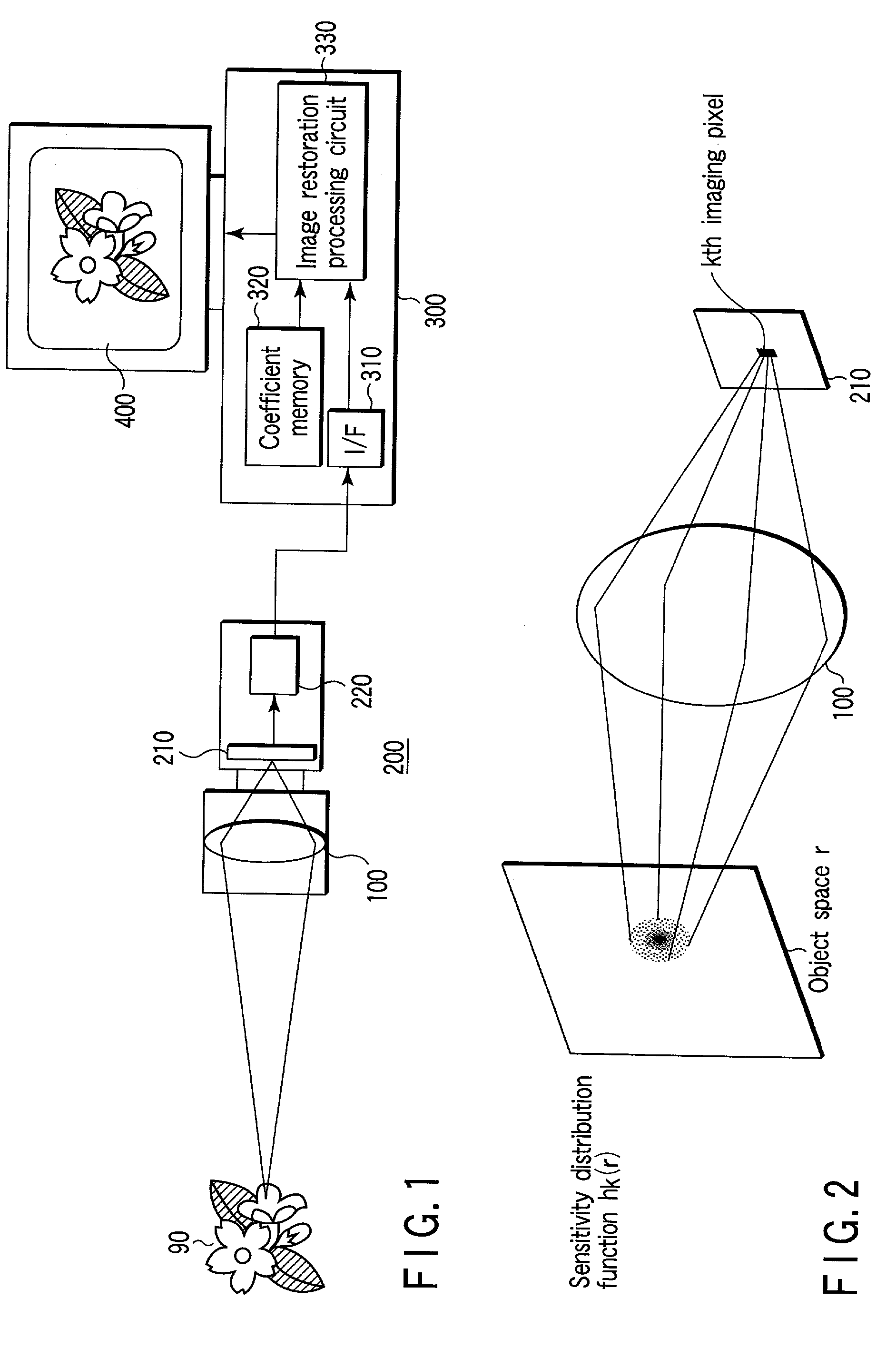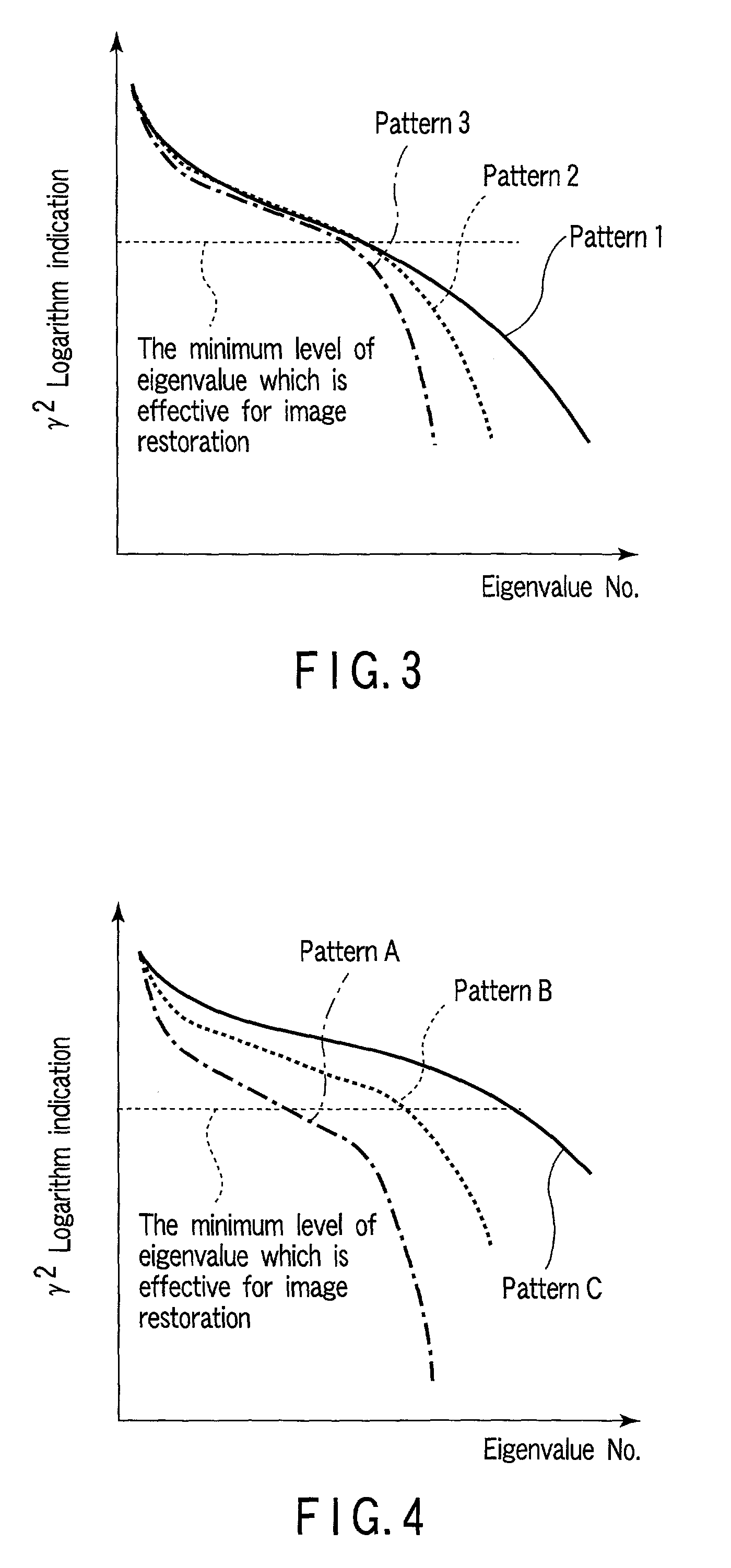Arranging a plurality of imaging pixels in an imaging acquisition apparatus
a technology of imaging acquisition apparatus and plurality of imaging pixels, which is applied in the direction of color signal processing circuits, instruments, television systems, etc., can solve the problems of limited signal processing capacity, difficult to realize, and limited format conversion processing of signals in such processes, so as to improve the degree of freedom in design
- Summary
- Abstract
- Description
- Claims
- Application Information
AI Technical Summary
Benefits of technology
Problems solved by technology
Method used
Image
Examples
first embodiment
(First Embodiment)
[0037]FIG. 1 is an overall structural view of an image acquisition apparatus according to a first embodiment of the present invention. The image acquisition apparatus is structured from a lens 100 as an imaging optical system, an imaging section 200, an image restoration processor 300 as an image restoration processing section, and a monitor 400.
[0038]An image of an object 90 imaged by the lens 100 is photoelectrically converted by an imaging element 210 in the imaging section 200, and is converted to an appropriate image signal in an image signal output circuit 220, and is outputted.
[0039]At the image restoration processor 300, the image signal from the imaging section 200 is inputted via an interface (I / F) 310, and is transferred to an image restoration processing circuit 330. Note that, when the sent image signal is an analog signal, the signal is converted to an appropriate digital signal in the I / F 310. On the other hand, coefficients suiting the conditions of...
second embodiment
(Second Embodiment)
[0115]A second embodiment of the present invention is a modified example of the imaging pixel arrangement in the imaging element. FIG. 8 shows a structural example of the second embodiment. Imaging pixels are disposed randomly throughout an entire imaging surface of a CMOS imaging element 213. Here, the definition of random is that the following two conditions are satisfied simultaneously.
[0116](i) There is no regularity to the distribution of the intervals between adjacent pixels.
[0117](ii) The existence concentration within a local region having a predetermined surface area is uniform and does not depend on the position of that local region.
[0118]FIG. 9 shows another structural example. The imaging surface of the imaging element is divided into four regions (region 1 through region 4) in a concentric circle form as shown in the left-hand drawing. In the same way as FIG. 6, for each region, the concentration of the pixels greatly differs. Within each region, the ...
third embodiment
(Third Embodiment)
[0122]The third embodiment of the present invention is an example in which imaging elements are structured by mosaic color type elements. FIG. 10 shows a structural example of the third embodiment. In the same way as FIG. 6 of the first embodiment, the imaging surface of a CMOS imaging element 215 is divided into four regions (region 1 through region 4) in a concentric circle form, and in accordance with moving from the center toward the periphery of the imaging surface, the concentration of disposed pixels becomes smaller region-by-region. Further, the pixel arrangement in each region is realized by systematic thinning. In this pixel arrangement structure, in order to realize a color imaging element, the arrangement of color filters mounted to the light receiving surface of each imaging pixel is random. Namely, when a method is used in which a color image is picked up by filters of the three primary colors of red (R), green (G), and blue (B), the arrangement for e...
PUM
 Login to View More
Login to View More Abstract
Description
Claims
Application Information
 Login to View More
Login to View More - R&D
- Intellectual Property
- Life Sciences
- Materials
- Tech Scout
- Unparalleled Data Quality
- Higher Quality Content
- 60% Fewer Hallucinations
Browse by: Latest US Patents, China's latest patents, Technical Efficacy Thesaurus, Application Domain, Technology Topic, Popular Technical Reports.
© 2025 PatSnap. All rights reserved.Legal|Privacy policy|Modern Slavery Act Transparency Statement|Sitemap|About US| Contact US: help@patsnap.com



